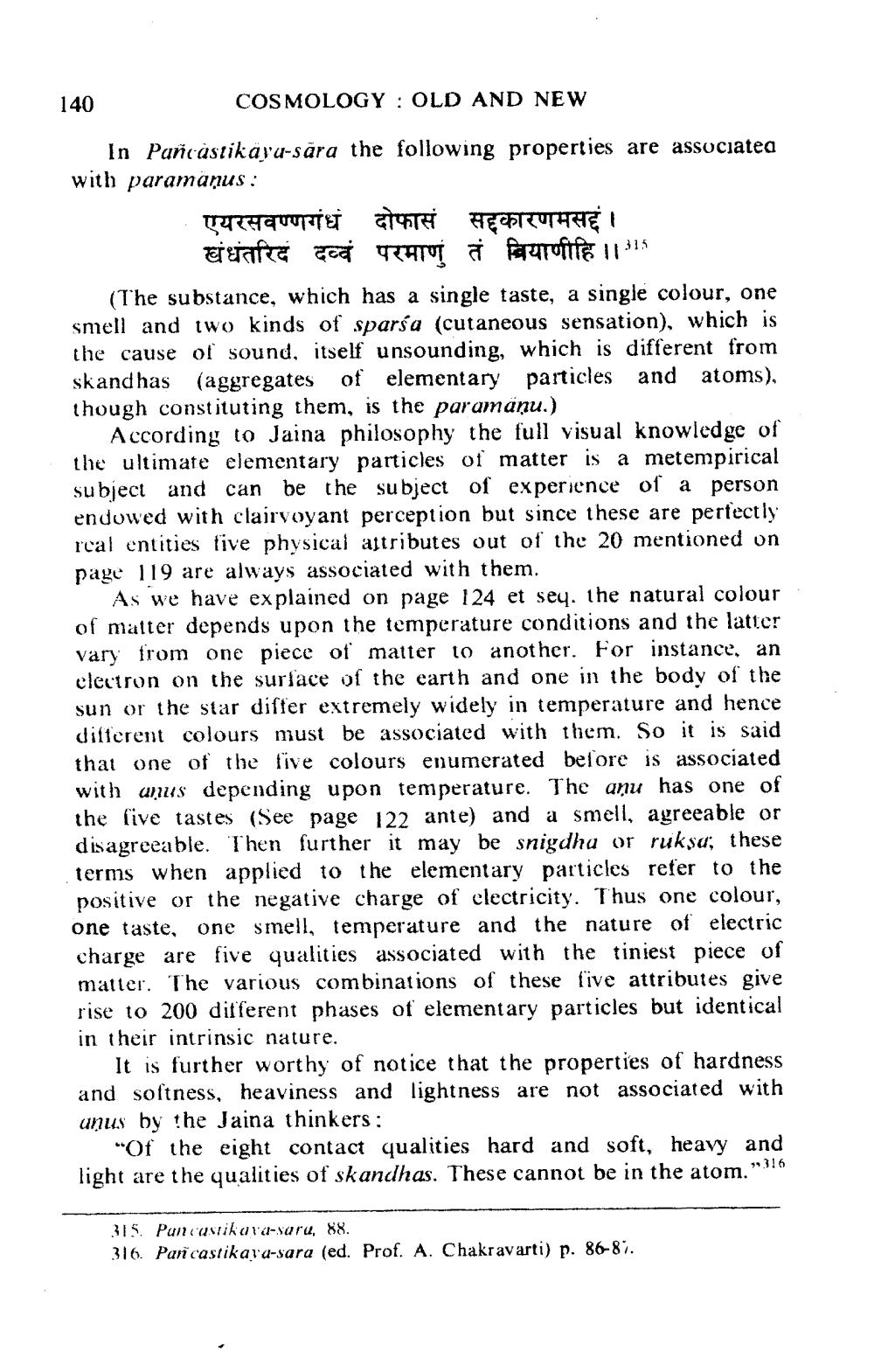________________
140
COSMOLOGY : OLD AND NEW
In Pañcâstikayu-sära the following properties are associatea with paramaņus :
एयरसवण्णगंधं दोफासं सद्दकारणमसई ।
खंधतरिद दव्वं परमाणं तं बियाणीहि ।।16 (The substance, which has a single taste, a single colour, one smell and two kinds of sparsa (cutaneous sensation), which is the cause of sound, itself unsounding, which is different from skandhas (aggregates of elementary particles and atoms), though constituting them, is the paramaņu.)
According to Jaina philosophy the full visual knowledge of the ultimate elementary particles of matter is a metempirical subject and can be the subject of experience of a person endowed with clairvoyant perception but since these are perfectly real entities five physical attributes out of the 20 mentioned on page 119 are always associated with them.
As we have explained on page 124 et sey. the natural colour of matter depends upon the temperature conditions and the latter vary from one piece of matter to another. For instance, an clectron on the surface of the earth and one in the body of the sun or the star differ extremely widely in temperature and hence different colours must be associated with them. So it is said that one of the five colours enumerated before is associated with unus depending upon temperature. The aņu has one of the five tastes (See page 122 ante) and a smell, agreeable disagreeable. Then further it may be snigdha or ruksa, these terms when applied to the elementary particles refer to the positive or the negative charge of electricity. Thus one colour, one taste, one smell, temperature and the nature of electric charge are five qualities associated with the tiniest piece of matter. The various combinations of these five attributes give rise to 200 different phases of elementary particles but identical in their intrinsic nature.
It is further worthy of notice that the properties of hardness and softness, heaviness and lightness are not associated with uņus by the Jaina thinkers :
"Of the eight contact qualities hard and soft, heavy and light are the qualities of skandhas. These cannot be in the atom.”316
VL
315. Puncusuikard-saru, 88. 316. Pari castikara-sara (ed. Prof. A. Chakravarti) p. 86-87.




